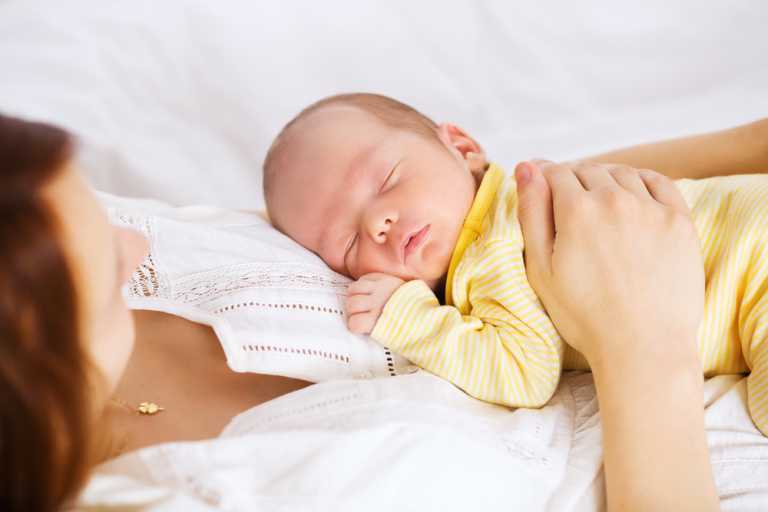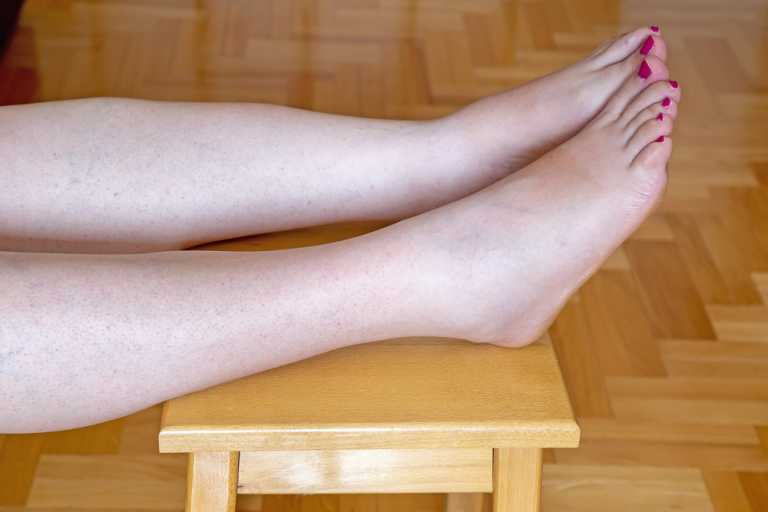Checking for signs of a skin infection after your c-section is easy. Redness, blisters, and crusty scabs are easy to spot and simple to treat.
However, things get more tricky with internal infections. Symptoms vary wildly, from increased vaginal bleeding to feeling like you’re coming down with the flu.
To help you monitor your recovery, we’ve summarized the key signs of internal infection after a c-section. Plus, everything you’ll need to know about treatment and prevention.
Signs Your C-Section Is Infected
Some post-cesarean infections are picked up by medical staff before you leave the hospital. But, as most take between 4 and 7 days to appear, it’s essential to be aware of the warning signs so you can spot problems early at home.
Here’s what you need to look out for:
- Fever
A temperature of 100.4ºF (38ºC) or higher.
- Flu-Like Symptoms
Feeling dizzy, weak, or shaky, or experiencing nausea, fatigue, vomiting, chills, or body aches as if you’re coming down with the flu.
- Extreme Abdominal Pain
This is counted as pain that:
- Makes it hard to sit up or move.
- Suddenly worsens after days of improvement.
- Doesn’t lessen after taking painkillers.
- Is so bad that you can’t concentrate on anything else.
- Bleeding From Your C-Section Incision
Fresh, bright red bleeding could indicate that your incision is opening. This is an emergency, and you should call your doctor right away.
- Foul-Smelling Vaginal Discharge
Fishy or foul-smelling vaginal discharge indicates an internal bacterial infection.
- Abnormal Vaginal Bleeding
While bleeding after birth (lochia) is normal, it should be manageable and decrease over time.
There may be a problem if:
- You experience a sudden increase in vaginal bleeding.
- You are filling more than one sanitary pad per hour.
- You are passing large blood clots.
- The bleeding drastically darkens.
- Problems With Your Urine
This includes:
- Difficulty urinating.
- Frequent urinating.
- Blood in urine.
- Cloudy urine.
- Pus
Pus is a white or yellow fluid filled with dead white blood cells. If it starts oozing from your C-section incision, it means that your body is fighting an infection.
- Redness and Swelling
Some amount of redness and swelling around your scar is normal. But if it spreads across your abdomen or feels warm to the touch, there may be a problem.
What to Do if You Get an Internal C-Section Infection
If you spot any of the warning signs listed above, contact your healthcare provider urgently. The sooner you receive treatment, the faster your recovery will be.
Internal infections cannot heal on their own, and if left untreated, they can lead to sepsis. This is a life-threatening condition that occurs after around 0.84% of cesarean deliveries.
Diagnosis of Infections After C-Section
The four most common types of C-section wound infections are:
- Impetigo
A bacterial skin infection that causes shallow blisters, itchiness, and a honey-colored crust.
- Cellulitis
An infection in the deeper layers of skin and tissues that causes redness, warmth, inflammation, and swelling.
- Abscesses
Painful, pus-filled cavities within your abdomen. These cause pain, tenderness, redness, and swelling. You might also see pus leaking from your wound site.
- Endometritis
An infection of the uterus. The most common signs are abdominal pain, fever, and foul-smelling vaginal discharge.
Treatment of Internal Infections After a Cesarean Section
Skin infections and endometritis will require antibiotics. You may receive these via an IV, depending on the severity of your symptoms.
The treatment for abscesses is usually more invasive, and they often need surgery.
This means a surgeon will reopen your wound, drain the pus, and scrape away any dead tissue. Then they’ll clean the wound and apply antiseptic and gauze.
You may require monitoring and irrigation for several days depending on the severity. Then, once everything looks good, your wound can be closed surgically or allowed to heal on its own.
Are Infections Common After a C-Section?
Between 3 and 15% of women will develop an infection after their cesarean section. But most of these are on the surface and are easy to treat, with no lasting complications.
The chances of developing endometritis are slightly lower. If you have your cesarean before going into labor, your chance of developing it is just 1.5%. However, if your labor has already started during your surgery, your risk rises to 7%.
Fortunately, the risk of developing a more serious abscess is the lowest, at less than 1%.
What Are the Risk Factors for Infection After a C-Section?
While it’s impossible to predict whether or not you’ll suffer complications after your cesarean, we do know the factors that make it more likely. So, if any of these apply to you, you should be even more vigilant for symptoms.
The risk factors include:
- Diabetes.
- Obesity.
- Smoking.
- Old or young maternal age.
- Taking immunosuppressant medication.
- Having had previous c-sections.
- Previous recurrent pregnancy loss.
- Penicillin allergy.
- Hypertensive disorder.
- Twin or triplet pregnancy.
- Early rupture of membranes.
- A large number of vaginal examinations during labor.
- Attempted vaginal delivery that resulted in a cesarean birth.
- Prolonged labor.
- Epidural.
- Use of internal fetal monitoring during labor.
- Hysterectomy during cesarean.
- Surgery that lasted an hour or more.
- Blood loss resulting in a blood transfusion during or after delivery.
- Not using prophylactic antibiotics.
How Can You Prevent Infection After a C-Section?
Finally, as prevention is better than a cure, let’s check out the top tips for preventing an internal infection:
Proactive Steps to Take Before Your C-section:
- Don’t shave your belly, as this can cause small cuts and a route in for bacteria.
- Ensure you will receive prophylactic antibiotics within 1 hour of the first incision.
- Wash with antibacterial soap before the procedure; your hospital usually provides this.
- If you have diabetes, prioritize managing your blood sugar before and after surgery.
- Try to give up or reduce smoking.
- Maintain a healthy weight.
Steps to Take After Your C-Section:
- Follow your aftercare instructions to the letter.
- Ensure you take your full course of prophylactic antibiotics without skipping any doses.
- Keep your incision site clean.
- Change your dressing regularly and check for signs of redness, pus, or swelling.
- Take showers, not baths, for the first 3 weeks.
- Avoid applying oils, perfumes, or lotions to your wound. When you wash, gentle, baby-safe products are best.
- Dry your wound thoroughly after washing. You can use a hairdryer on a cool setting or pat the area with a clean towel. If you are plus-sized, you will need to pay special attention to keeping your wound dry.
- Try to prevent skin folds from covering your wound. This creates a warm, moist environment where bacteria can thrive.
- Avoid tight clothes and non-breathable fabrics.
- Don’t lift anything heavier than your baby for the first six weeks.
- Follow the advice on delaying driving, sex, exercise, bending, swimming, hot tubs, etc. until your wound has healed.
- Don’t insert anything into your vagina until you have fully healed.
- Don’t scratch your wound. If your c-section scar is itchy, apply a cold compress wrapped in a clean cloth, or ask your doctor about silicone creams or patches.
- Take your temperature if you feel unwell.




